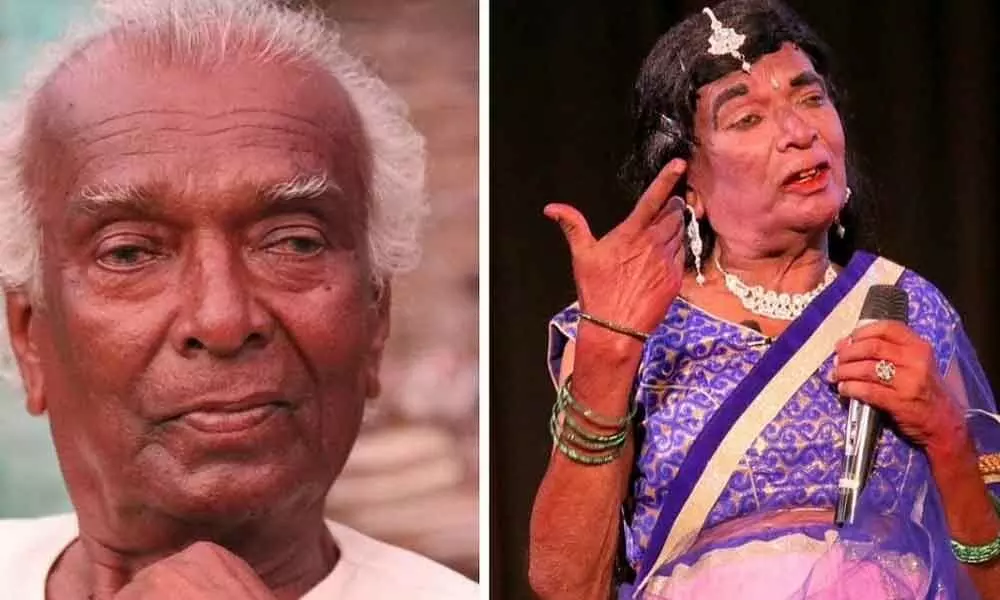India Bestowed The Padma Shri To Ramchandra After 84 Years, Yet 'Naach' Was Always His Identity

Ramchandra Manjhi
- Ramchandra Manjhi was awarded the Padma Shri, India's fourth-most civilian and elevated regular citizen grant, and Sangeet Natak Akademi in 2021
- He applied his own make-up and put on a show in West Champaran.
Ramchandra Manjhi was awarded the Padma Shri, India's fourth-most civilian and elevated regular citizen grant, and Sangeet Natak Akademi in 2021, yet his greatest accomplishment is something different. He was a wise granddad who led discussions with his village neighbors about contemporary political and social issues.
He has been playing 'Naach,' a musical theatre performance, for the past 84 years as a resident of Bihar's Chapra region. His capacity to execute with the same passion and intensity on stage due to his poor eyesight and age-related diseases is at the top of his list of achievements. The 97-year-old wore a ghagra choli, in the last month to perform and celebrate World Yoga Day. Heapplied his own make-up and put on a show in West Champaran. There was a possibility that he hadlost his balance and failed to deliver the relatively close thumka while acting, but his gestures likeeyes, voice, and body language as a sautan which meansmistressin Bidesiya, a popular drama written by late Bhikari Thakur, earned him to urge greatapplause. Many people are surprised by his transformation from a grandfather to a woman searching for love while dealing with societal pressures, and he considers it his greatest achievement.
Ramchandra began his career in the performing arts when he was just ten years old. 'Naach'had just begun to take off in the Bihar hinterlands, and money was plentiful, so his parents didn't object if their son used to wore crossdress for hisperformances. In fact, it was made honorable by the by-products of theatrical performance, money, and fame. This was not how the rest of the world saw Naach. The artform was ousted from its esteemed position when evident caste barriers arose. Ramchandra, on the other hand, persisted since it was not only his livelihood but also a source of transformation. He is currently a member of the Bhikhari Thakur Repertory Training & Research Centre, which is directed by Dr Jainendra Dost, a JNU Performing Arts scholar.
Meanwhile, 'Naach' is not a traditional Bihar folk dance, despite popular assumption. It's similar to Jaatra, Tamasha, or Nautanki, in which a troupe acts on historical folklore and present socioeconomic conditions in order to maintain their history while entertaining the audience. Female characters in Naach are played by guys who crossdress as women.
Ramchandra said that he has spent his entire life doing Naach and its his identity for what he is known. Performance, like brushing one's teeth, is an important component of any artist's daily regimen. Naach has been there for me at every stage of my life, and my motivations have changed with each decadefrom money, pleasure, joy, and informing peopleand creating awareness to now preserving this disappearing art form. Whereas, in the Mughal Empire, tawaifswere very important in the palaces and residences of the kings and lords of India. The time of Baiji Naach is thought to have begun after the tawaifs. During major occasions such as weddings and festivals, landlords and moneylenders were the principal organizers of Baiji Naach.
Ramchandra has defied gender and caste biases, as well as financial hardships and other obstacles, to keep his heritage alive. He feels that art is the only way to be inspired and to inspire a large number of others.















